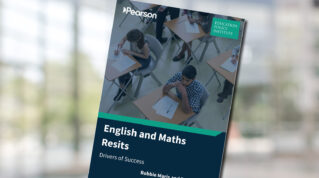Government forecasts of teacher recruitment should include further education as it is the “worst impacted” sector, MPs have said.
At present, the Department for Education’s teacher workforce model, which sets annual recruitment targets based on projections of incoming learners and teacher flows, only looks at the needs of primary and secondary schools.
This is despite FE facing an increasingly acute staffing crisis, widely understood to be caused by salary increases failing to keep up with inflation and falling short of what is offered in schools and industry.
Following an inquiry into teacher recruitment, MPs on the education committee have urged the DfE to include post-16 education in its modelling to ensure it has a more “holistic picture” of staffing needs “throughout all stages of education”.
During the inquiry, schools minister Damian Hinds said the range of expertise needed and competition with “really well-renumerated” jobs in the private sector left FE facing “particular” challenges.
It is unclear why the DfE does not include FE in its workforce modelling, which it has run for at least a decade.
However, it is unclear if inclusions would boost staffing numbers.
Statistics published by the initial teacher training census suggest recruitment targets for schools have only been achieved once since 2015-16.
Anne Murdoch, a senior adviser at the Association of School and College Leaders, said it made “no sense” for colleges and other FE providers to be excluded from the model.
“The post-16 sector is woefully underfunded, and this is the greatest barrier to improving recruitment and retention.
“Schools and colleges must be properly resourced to enable to them to afford levels of pay which attract and retain teachers.”
Low pay is widely understood to be the main cause of FE’s staffing crisis, with one in four staff in 2019 leaving within their first year of work.
David Hughes, the chief executive of the Association of Colleges (AoC), said that while he supported the committee’s call for the government to include FE in its modelling, challenges such as the pay gap should also be “eradicated”.
According to AoC estimates, based on DfE workforce data, the average gap between annual salaries of school and FE teachers reached £9,000 last year.
This follows years of real-term cuts to FE teachers’ pay, which has increased at a lower rate than inflation in every year since 2010, except 2015.
The government has long recognised that recruitment is a problem and has tried to increase public awareness of the sector through its Teach in Further Education recruitment campaign, launched in early 2022.
Committee members also called for the expansion of government schemes to boost the appeal of the sector, such as financial incentives of up to £6,000 for teachers starting in STEM and technical subjects.
A Department for Education spokesperson said: “We are investing £470 million over two years to help FE providers address key priorities – including the recruitment and retention of staff.
“We will continue to support the sector to attract new staff with measures including teacher training bursaries worth up to £30,000 tax-free, a national recruitment campaign and programmes supporting providers to recruit those with relevant knowledge to retrain and teach.
“We are also extending the levelling-up premium to all FE colleges for the first time. We will give eligible early career teachers in key STEM and technical shortage subjects, working in colleges, up to £6,000 after tax annually on top of their pay.”
Committee members also want the department to plan for a “demographic bulge” in secondary school pupils, which is expected to peak this year.

















Just a reminder – The FE sector is more than just colleges.
Beyond pay differentials with Schools, I’m sure that many of the 20% of college staff and 7% of ITP staff on Zero Hours contracts would welcome some good news on pay and conditions.
The pay gaps are probably wider as non permanent staff are excluded from the averages…